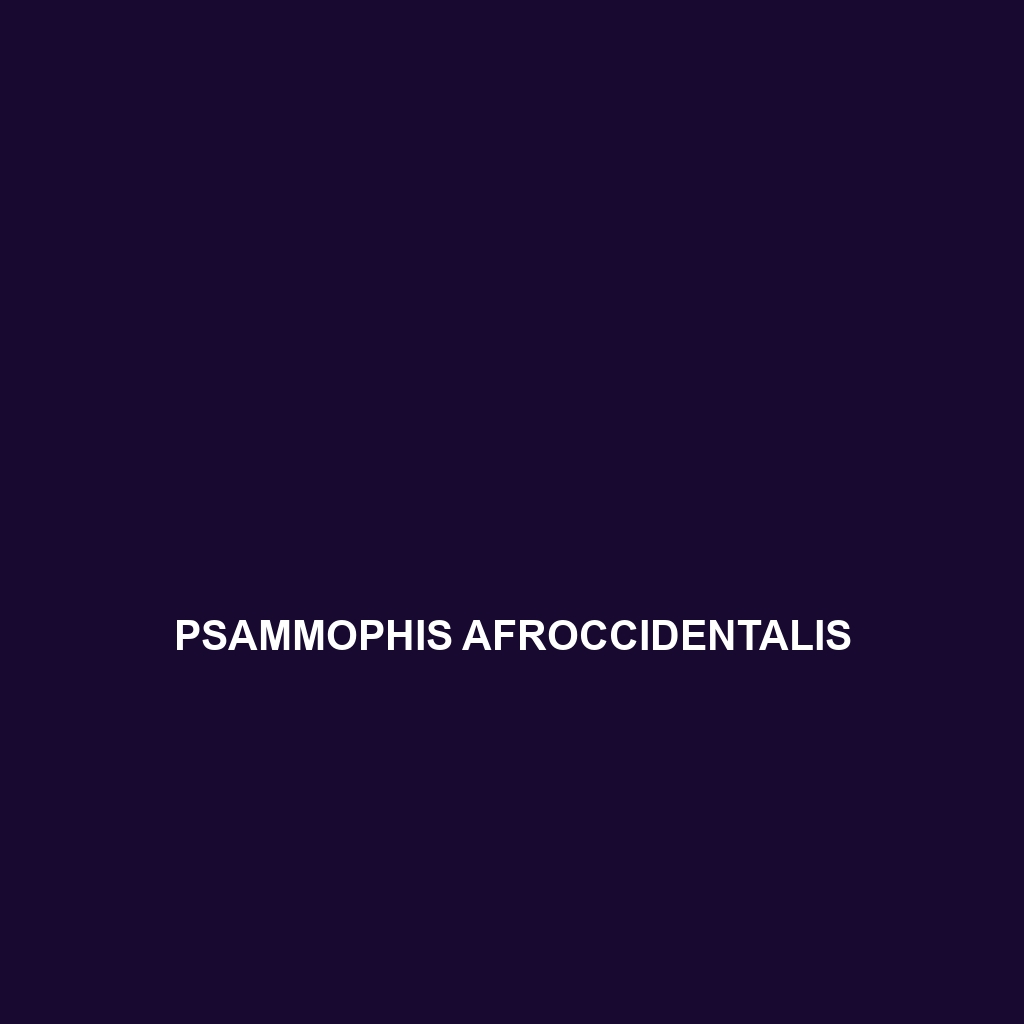<b>Psammophis trivirgatus</b>, or the Three-striped Sand Snake, thrives in sandy environments across Africa and Asia, characterized by its light brown body and three distinct stripes. This diurnal predator features a keen sense of sight and rapid movement, primarily feeding on small mammals, lizards, and insects, while playing a vital role in maintaining ecological balance.
Tag: sandy environments
Psammophis afroccidentalis
<p><b>Psammophis afroccidentalis</b>, commonly known as the Western Sand Snake, is a slender, medium-sized snake measuring 70-110 cm, characterized by its sandy brown coloration and dark blotches. Primarily found in the dry uplands and savannas of Sub-Saharan Africa, this carnivorous snake is known for its swift movement, burrowing behavior, and crucial role in maintaining ecological balance.</p>
Psammodromus hispanicus
<b>Psammodromus hispanicus</b>, commonly known as the Iberian sand racer, is a slender, diurnal lizard found in the southeastern regions of Spain, thriving in warm, sandy habitats. With a striking coloration and impressive agility, it primarily feeds on insects and plays a crucial role in regulating local ecosystems.
Psammophis trivirgatus
<b>Psammophis trivirgatus</b>, or the Three-striped Sand Snake, thrives in sandy environments across Africa and Asia, characterized by its light brown body and three distinct stripes. This diurnal predator features a keen sense of sight and rapid movement, primarily feeding on small mammals, lizards, and insects, while playing a vital role in maintaining ecological balance.
Psammophis afroccidentalis
<p><b>Psammophis afroccidentalis</b>, commonly known as the Western Sand Snake, is a slender, medium-sized snake measuring 70-110 cm, characterized by its sandy brown coloration and dark blotches. Primarily found in the dry uplands and savannas of Sub-Saharan Africa, this carnivorous snake is known for its swift movement, burrowing behavior, and crucial role in maintaining ecological balance.</p>
Psammodromus hispanicus
<b>Psammodromus hispanicus</b>, commonly known as the Iberian sand racer, is a slender, diurnal lizard found in the southeastern regions of Spain, thriving in warm, sandy habitats. With a striking coloration and impressive agility, it primarily feeds on insects and plays a crucial role in regulating local ecosystems.
Phrynocephalus hispidus
Discover the Hispid Toad-head Agama (Phrynocephalus hispidus), a resilient reptile native to the arid regions of Central Asia, thriving in semi-desert environments. With distinctive spiny scales and a diet primarily consisting of insects, this fascinating species exhibits unique behaviors such as territorial displays and elaborate courtship rituals, making it a remarkable inhabitant of its ecosystem.
Pachydactylus namaquensis
Discover the Pachydactylus namaquensis, or Namaqua gecko, a medium-sized lizard native to the arid regions of Southern Africa, known for its exceptional climbing abilities, diverse colors aiding in camouflage, and nocturnal habits. This resilient insectivore thrives in rocky, semi-arid environments, playing a crucial role in controlling insect populations and maintaining ecological balance.
Liolaemus nazca
Discover the Liolaemus nazca, or Nazca iguana, a resilient lizard native to the arid Nazca desert of southwestern Peru. This insectivorous species, measuring 15 to 20 cm, is known for its unique adaptations, including color-changing abilities for camouflage and elongated toes for navigating rocky terrains.








